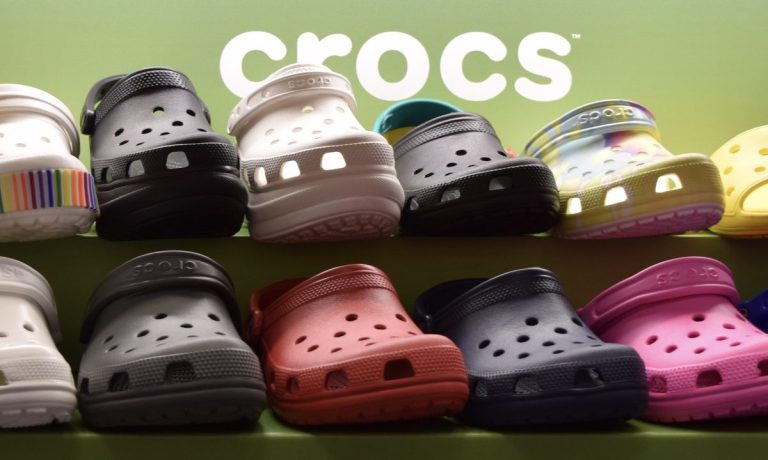
Crocs saw its revenue nearly double year over year to $640.8 million in the second quarter, beating both internal and Wall Street expectations as direct-to-consumer (D2C) and digital sales accelerate amid the reopening of retail locations and increased demand.
The Colorado-based casual footwear company had earlier this year predicted between 60 percent and 70 percent revenue growth in the second quarter; in reality, revenue grew by 93 percent compared to 2020 and 79 percent compared to 2019.
“We continue to see strong demand for the Crocs brand globally,” CEO Andrew Rees told investors and analysts in reporting earnings on Thursday (July 22).
The executive cautioned, though, that spikes of COVID-19, particularly in Asia, could impact supply in coming quarters, and transit times from Asia to most of Crocs’ leading markets are approximately double what they historically were.
“It’s probably one of our key concerns,” Rees told analysts, referring to the supply chain’s ability to keep up with company growth.
Chief Financial Officer Anne Mehlman said the company manufactures “a significant portion” of its products in Vietnam, where earlier this week rival footwear brand Nike halted manufacturing at several of its factories. S&P Global Market Intelligence has predicted that Nike may run out of Vietnamese sneakers, as Vietnam accounted for 49 percent of U.S. seaborne Nike imports in the company’s second quarter.
Direct-to-consumer sales made up over half of Crocs revenue in the second quarter, up 78.6 percent compared to 2020 and 86.4 percent compared to two years ago. Digital sales represented 36 percent of the brand’s revenue in the three months ending June 30, up 25 percent versus prior year and 99 percent compared to 2019.
“We really see strength in all the channels,” Rees said, with significant increases in traffic at Crocs’ retail stores, particularly in the U.S. and Korea.
Wholesale also grew by 112 percent, to $307.3 million, as the company focuses more on “strategically important accounts,” Rees said, including sporting goods, family footwear and specialty footwear retailers.
Overall, Crocs sold 29.1 million pairs of shoes between April and June, 74 percent of which were clogs and 20 percent of which were sandals. Though clogs’ growth, at 101 percent, has outpaced the 57 percent growth of sandals, Rees said Crocs expects sandals to grow faster than clogs over the long term.
Environmental Goals
Crocs also unveiled a commitment to have net zero carbon emissions by 2030 by transitioning to sustainable ingredients, minimizing packaging and finding ways to create a “circular supply chain” to keep shoes out of landfills.
Rees said reducing the company’s environmental impact “is the right thing to do for Crocs,” and said the company is confident it has “the right innovations and the right partners” to help it reach its net zero ambitions.
It may be the right thing to do, but it’s also likely good for business. According to a report by the National Retail Federation and IBM, 77 percent of consumers say it’s at least moderately important that brands are sustainable and environmentally responsible.
Additionally, an analysis by the World Economic Forum and Accenture found that when social, environmental and economic benefits overlap, retailers’ costs can be reduced by 9 to 16 percent, revenue can increase by 5 to 20 percent and brand value can increase by 15 to 30 percent.
Looking Ahead
In the third quarter, Mehlman said Crocs expects revenues to rise 60 percent to 70 percent, keeping in mind potential supply chain disruptions and additional expenses.
Nevertheless, the company raised its full-year guidance to over 60 percent growth, up from previous projections of 40 percent to 50 percent, compared to 2020 revenues of $1.4 billion. Crocs also said it will invest nearly $100 million in its supply chain to support the company’s growth.
Shares of Crocs were up over 10 percent following the Thursday earnings release; the company’s stock is up over 90 percent year to date, compared to the S&P 500’s 16 percent rise. Crocs has a $7.8 billion market cap.